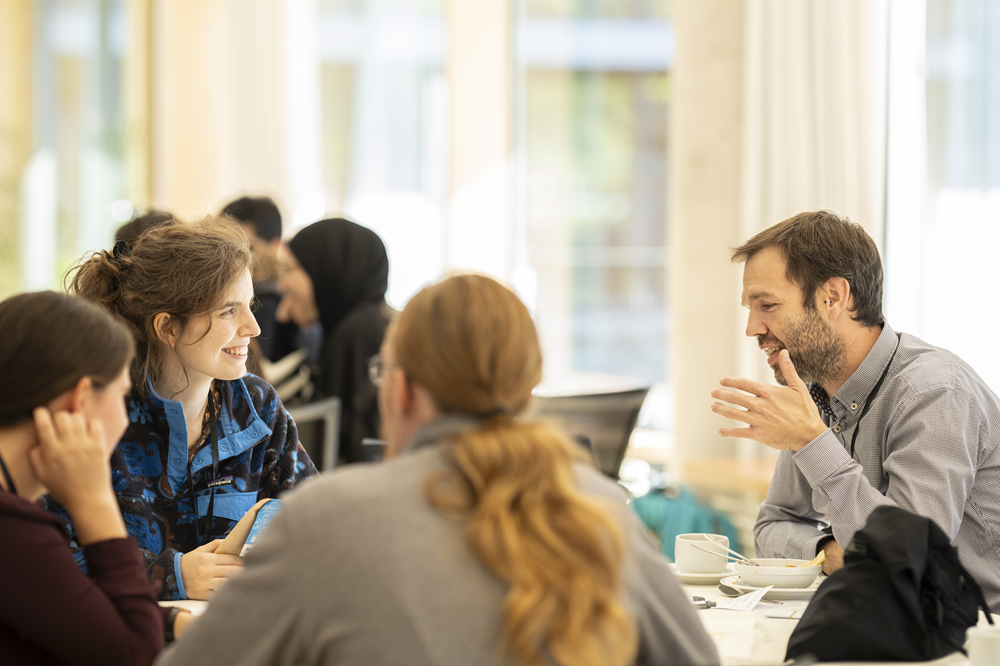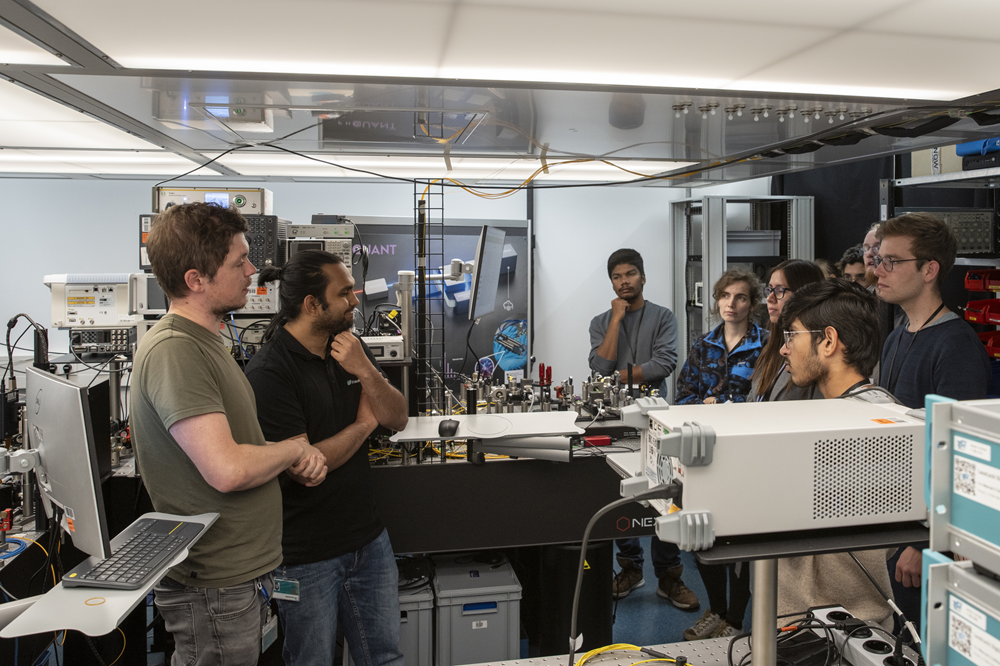Small but mighty: this applies equally to the fascinating world of quantum physics and to this year's Photonics Day Jena. On September 29, the Fraunhofer IOF's traditional career and networking event invited international guests to an exclusive program that—in keeping with UNESCO's International Year of Quantum Science—was all about the smallest indivisible units.
Photonics Day Jena goes Quantum: That was the Photonics Day Jena 2025
International career and networking event dedicated to quantum research
"I hope I can convince you how cool quantum technologies are," Christine Silberhorn told the participants of this year's Photonics Day Jena in a packed lecture hall. Around 100 young researchers from 12 countries gathered here for a full-day program of specialist lectures, lab tours, a hackathon, and numerous opportunities for dialogue, to gain insights into current trends in quantum technologies and find guidance on their own career questions.
Career role models and scientific inspiration
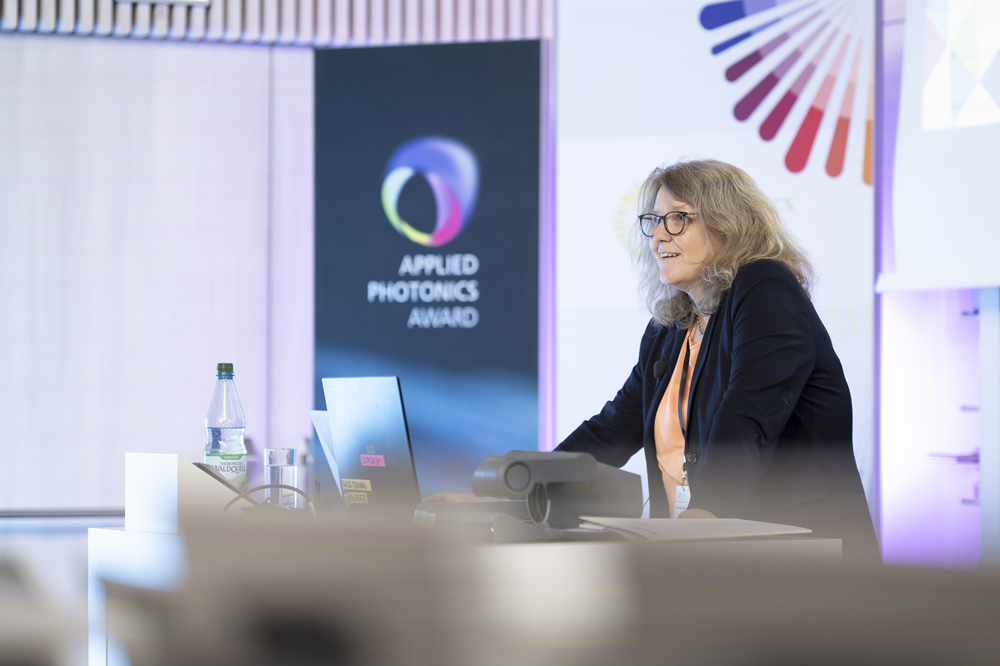
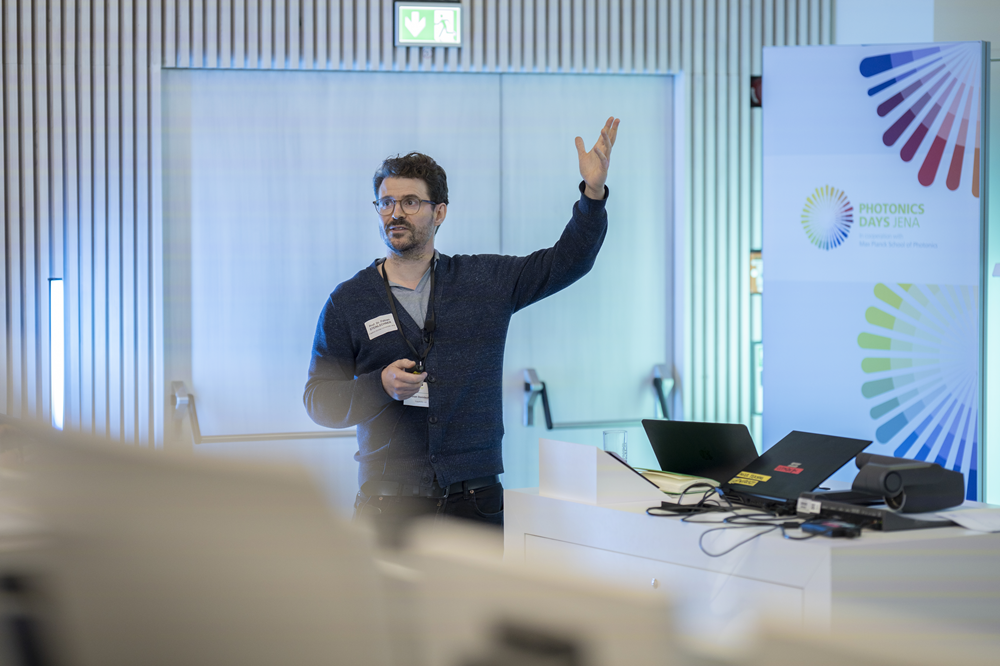
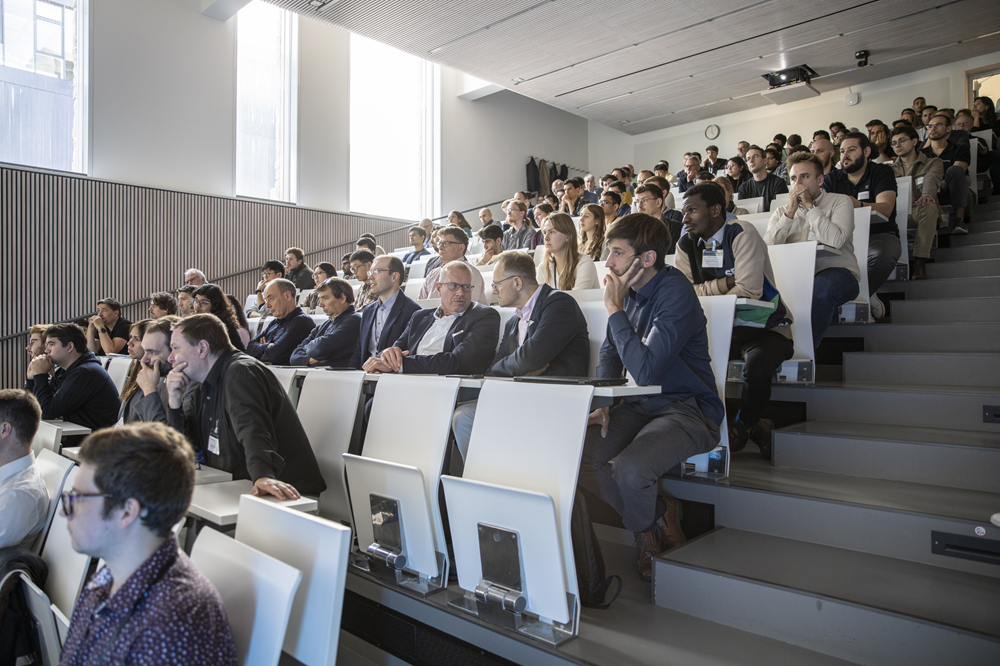
And who better to convey to young people a fascination for the almost magical world of quantum physics than quantum researcher Christine Silberhorn, who in 2011 became the youngest recipient of the Gottfried Wilhelm Leibniz Prize for her work in the field of experimental quantum optics? Today, Prof. Silberhorn holds the Chair of Integrated Quantum Optics at the Paderborn University. She is not only a career role model for young researchers, but also a "rock star of the current quantum scene," as Photonics Day presenter Anna-Katharina Grimm introduced the physicist.
In her keynote speech, Prof. Silberhorn highlighted the potential of photonic quantum technologies in particular. "We are developing the foundations for future quantum technologies using the quantum properties of light," she explained, focusing on the challenges that arise when experimental setups from the laboratory have to be scaled up for broad application to larger systems. Silberhorn emphasized that significant progress has already been made in some fields of research, such as quantum communication. In a presentation preceding her keynote, Prof. Dr. Fabian Steinlechner, researcher at Fraunhofer IOF and professor of experimental quantum information technology at Friedrich Schiller University in Jena, had already presented current technologies for quantum communication, which are a relevant research focus at Fraunhofer IOF and are already experiencing initial commercialization on the market, for example through young quantum start-ups.
However, groundbreaking progress is also being made in other fields of research, such as quantum computing. Christine Silberhorn, for example, presented the PhoQuant project, which is being implemented jointly by Paderborn University, Fraunhofer IOF, and other partners. Its goal is to develop a photonic quantum computer. The key feature here is that a quantum computer based on optical technologies does not require the complex cooling systems needed for other quantum computers. As part of the project, the first demonstrators for relevant key components of a photonic quantum computer have already been built in both Paderborn and Jena. The further development of innovative materials such as thin-film lithium niobate is contributing significantly to the scaling of the systems, as Silberhorn explained.
Networking and awards for young talent
In addition to renowned researchers, the Photonics Day Jena focused primarily on young talents. The event opened in the morning with a career and industry brunch. Over breakfast, participants had the opportunity to get to know potential employers from the industry in a relaxed atmosphere. Lab tours and a showroom on current technology trends rounded off the supporting program.
In keeping with the spirit of promoting young talent, the Applied Photonics Award was once again presented during Photonics Day Jena 2025. This year, a total of €7,000 in prize money was awarded to four winners of the award, organized by Fraunhofer IOF, for outstanding theses related to applied photonics.
Young researchers were able to secure a further €27,500 in funding at the "Idea Pitches" organized by the Cluster of Excellence in Photonics. Six pitchers took to the stage and each had three minutes to convince the audience of their research ideas and secure a research budget as kick-off funding. The winners were decided by audience vote. They were:
- Christoph Freitag (€7,500)
Conquering the Seas in Three Dimensions – Optical 3D Scanning in Murky Water
- Gregor Sauer (€7,500)
Intelligent Polarization Control for Quantum Cryptography
- Trevor Vrckovnik (€7,500)
Generation of Squeezed Light Sources on Photonic Integrated Circuits
- Juan Jose Arango Uribe (€5,000)
Non-Linear Interference for On-Chip All-Optical Logic
Learning through play – and hacking a highly secure quantum channel along the way

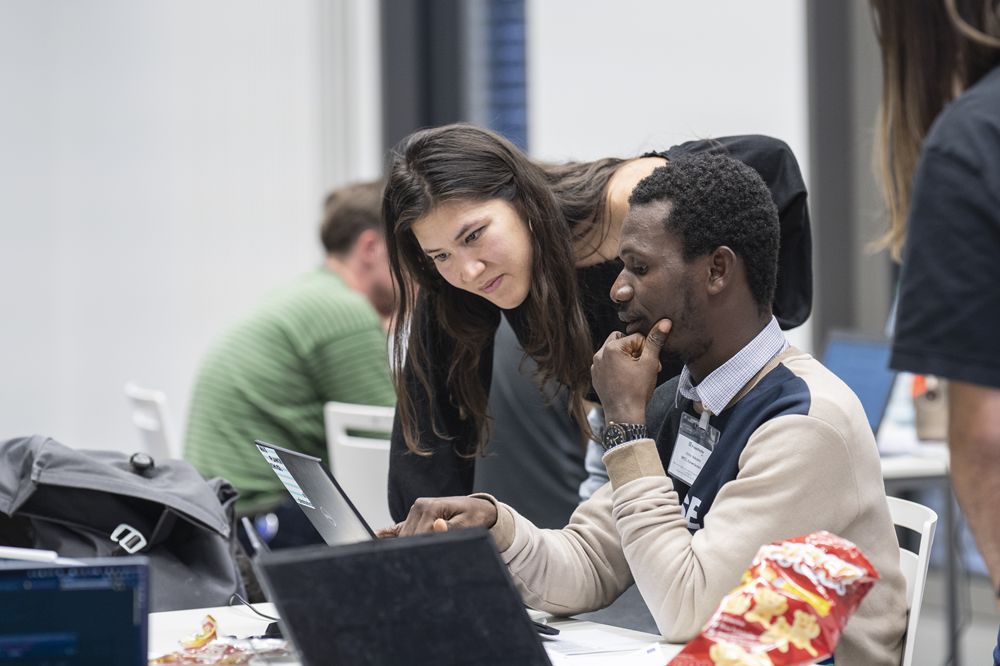
True quantum fans were able to take on a very special challenge at a parallel quantum hackathon. Organized by the O.PEN project ("Open Penetration Test of a Quantum Communication System with the Involvement of Society"), participants had the opportunity to familiarize themselves with the technical features of a highly secure quantum connection in an experimental hacking attempt. From 11 a.m. until late into the night, three teams – EVEL, Qrackers, and JENeavesdroppers – puzzled and tinkered.
The participants from Germany, the US, Romania, the Netherlands, and Italy first developed different approaches to solving the challenge in the role of a potential attacker. They then attempted to intercept a quantum signal between a receiving and transmitting unit in a real-life quantum communication setup and read the data with their programmed codes. The aim was to provide a deep understanding of the underlying BB84 quantum protocol and its structure. Among the three competing teams, the JENeavesdroppers with Hinrich Dirksen, Victor Adeyemi, and Janik Viktor ultimately emerged as the winners of the hackathon.
About Photonics Days Jena
In order to promote young talent and thus innovation in the fields of optics and photonics, Fraunhofer IOF, together with the Max Planck School of Photonics graduate school, has been organizing Photonics Days Jena as a networking and career event for students and doctoral candidates since 2019. On September 29, 2025, the organizers invited participants to network with an international community and representatives of renowned companies. In addition to professional exchange, the focus was on career guidance and establishing valuable contacts for participants' own professional careers.
Those interested can find out more about Photonics Days Jena at www.photonicsdays.de. If you don't want to miss any future events, you are invited to register for a reminder by emailing to photonics.days@iof.fraunhofer.de.


